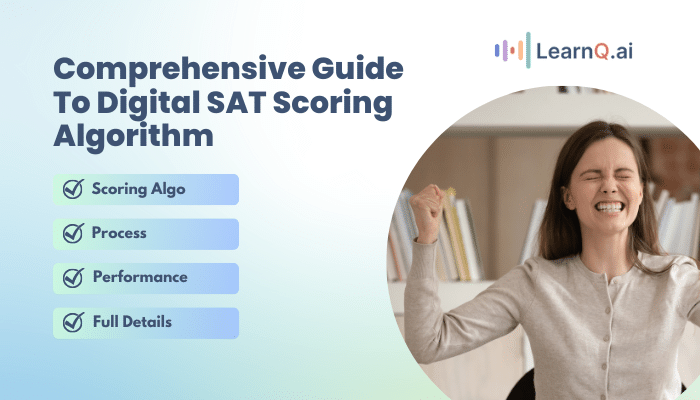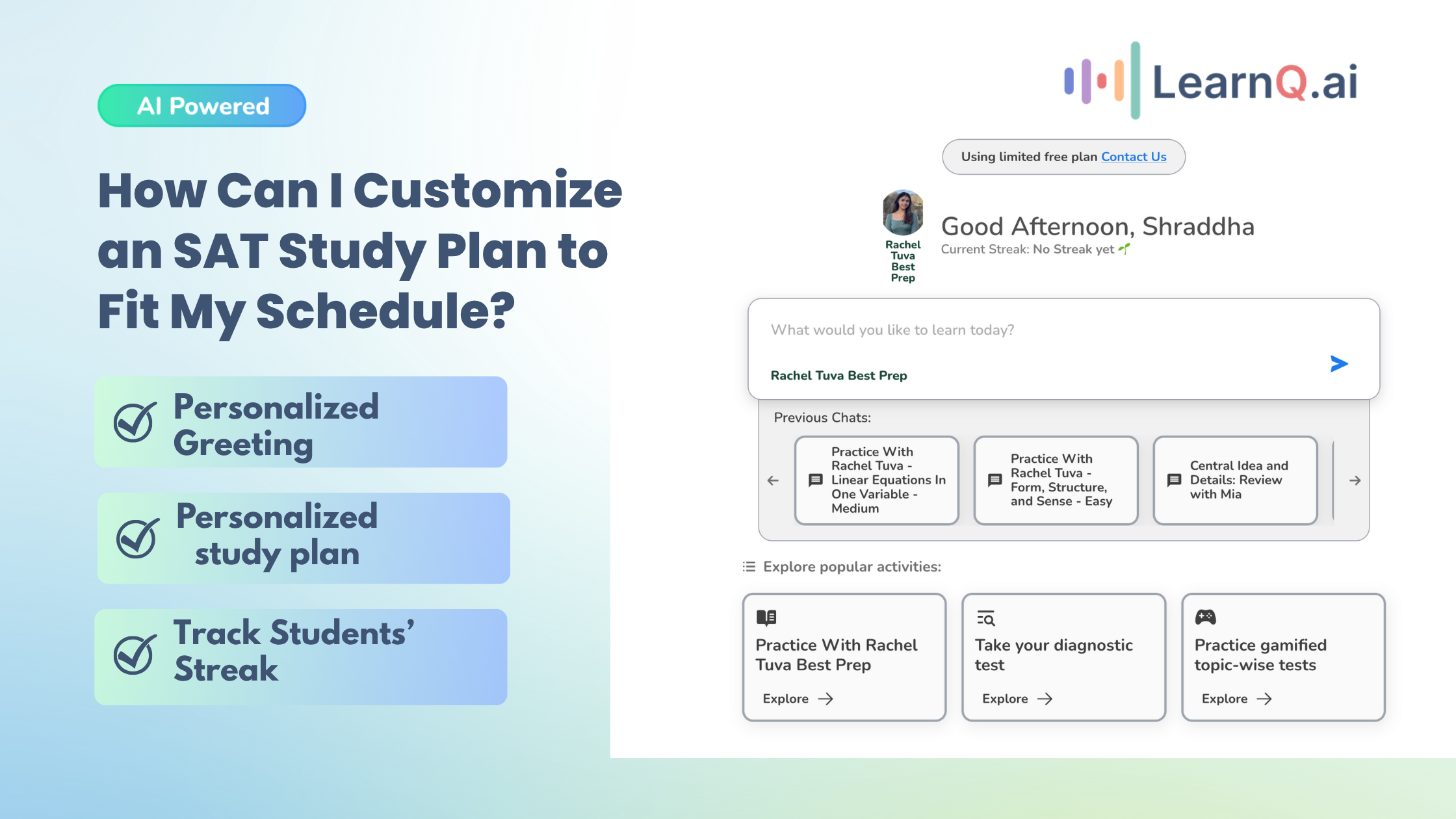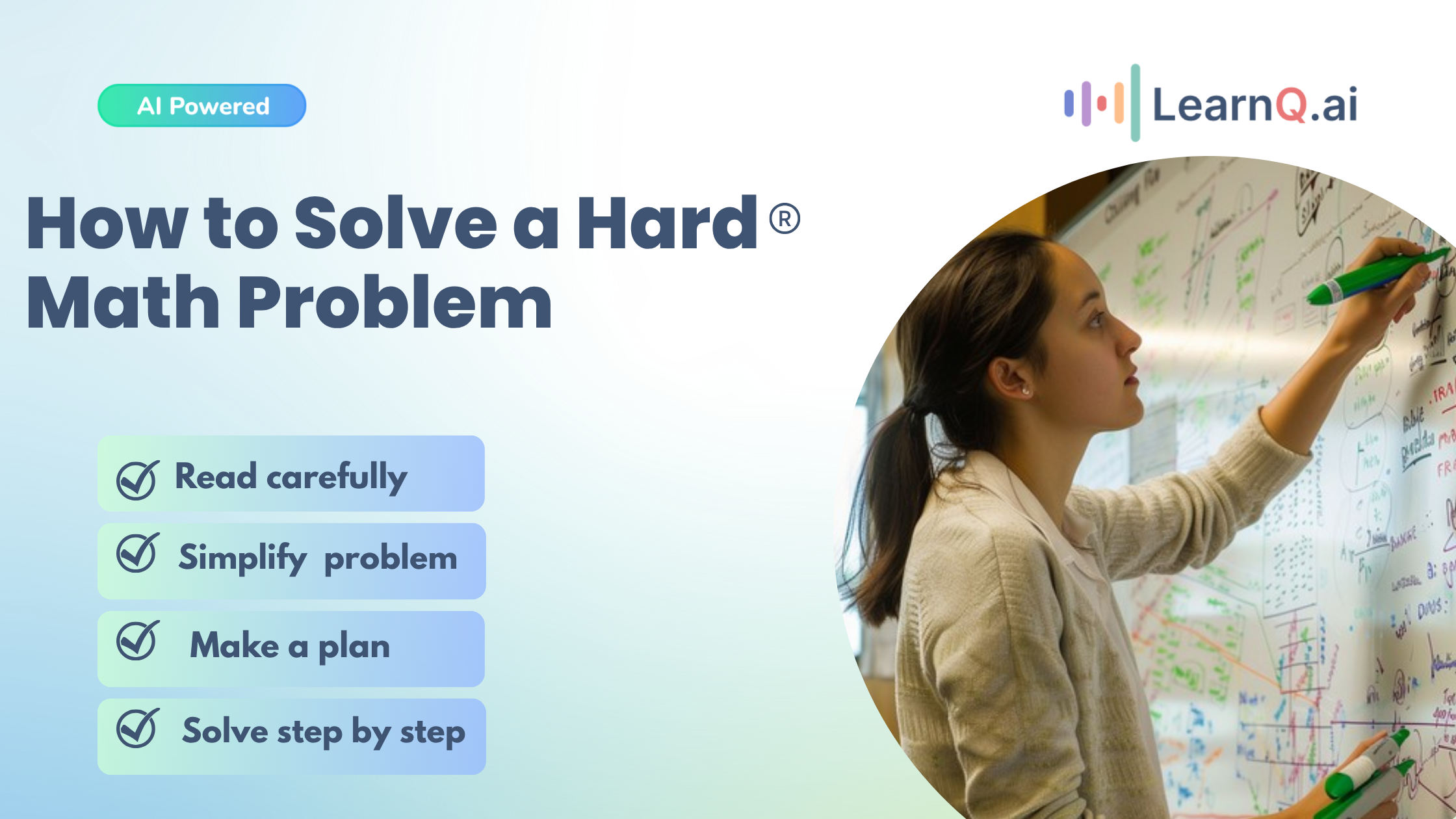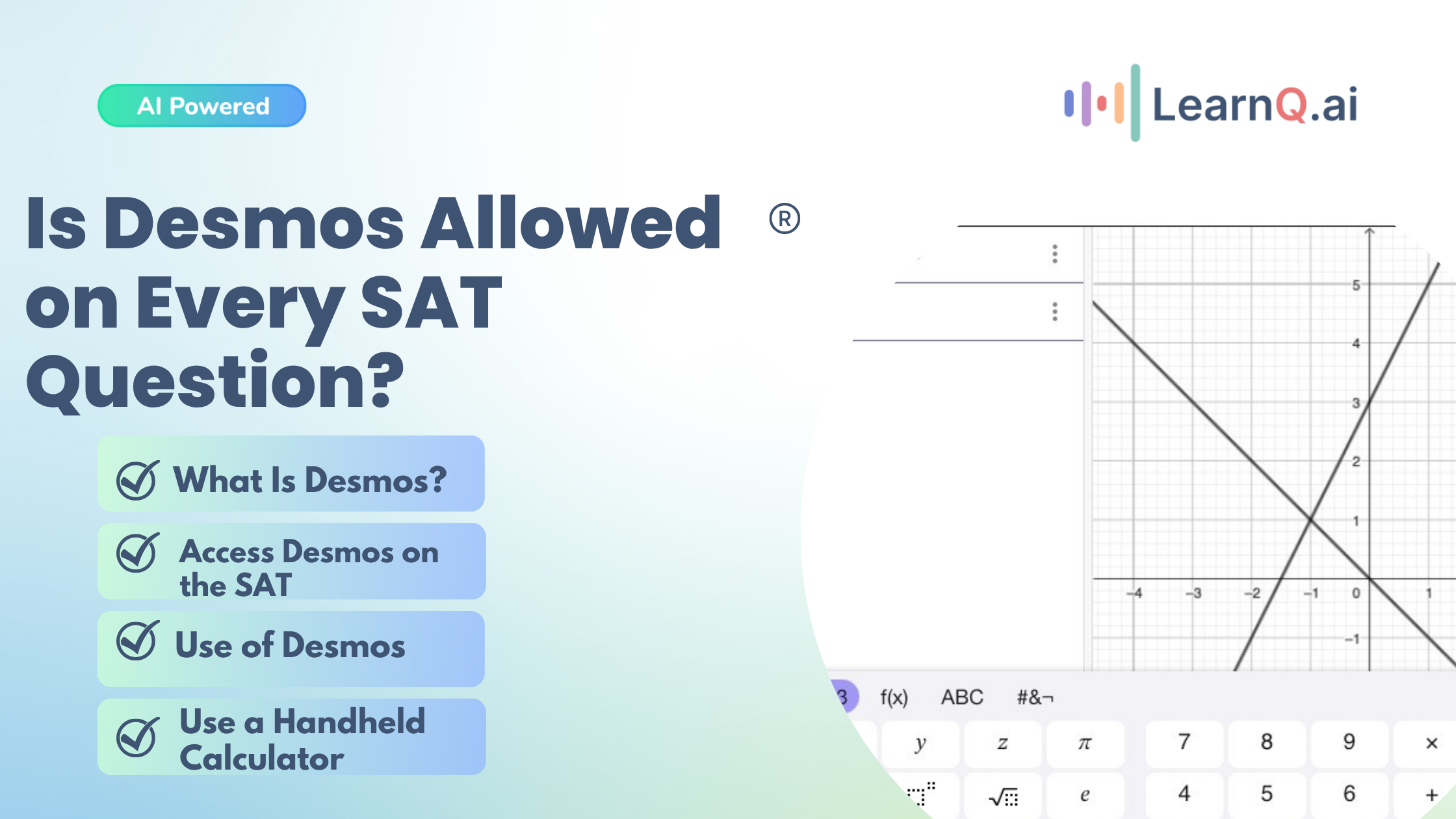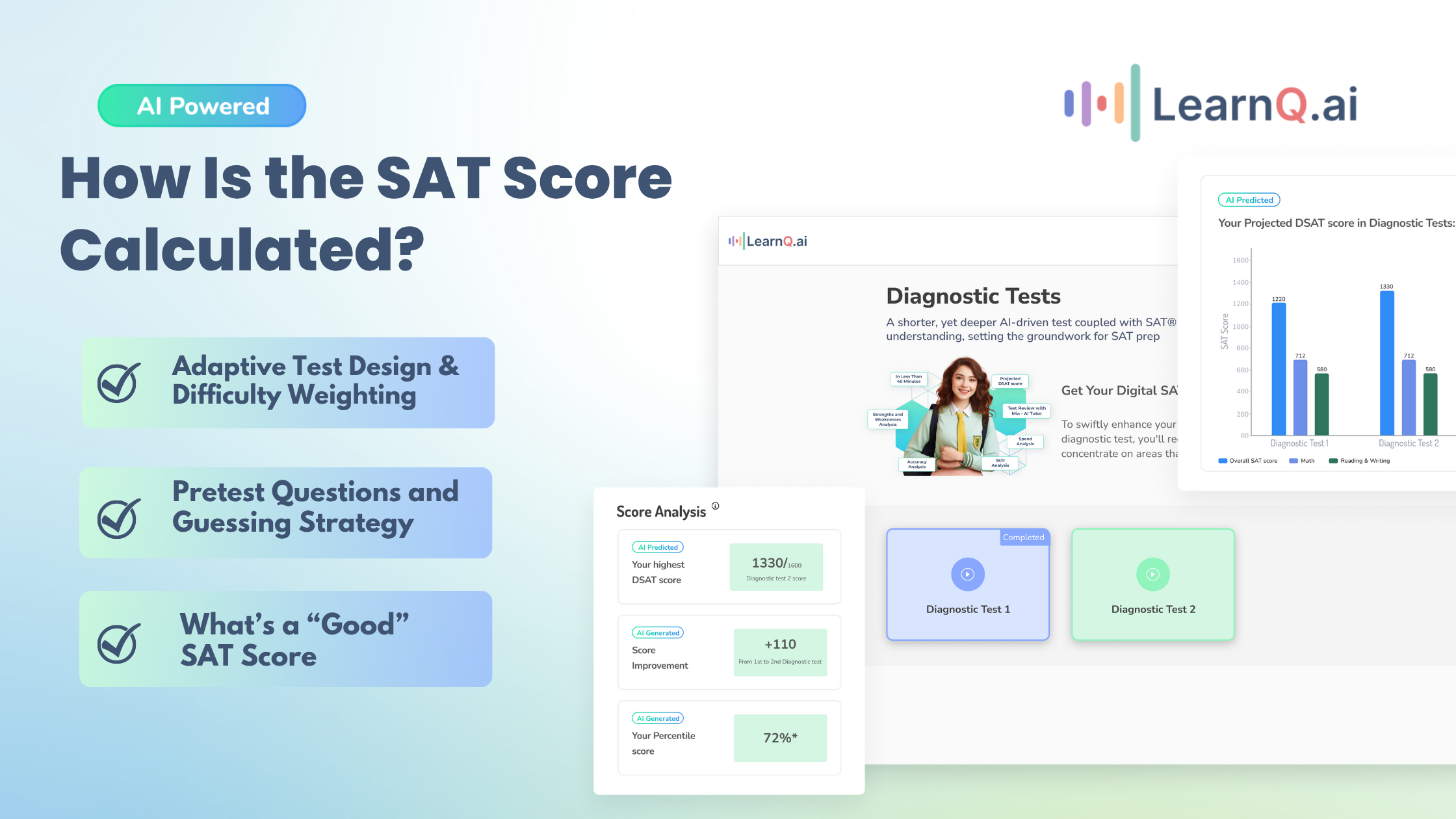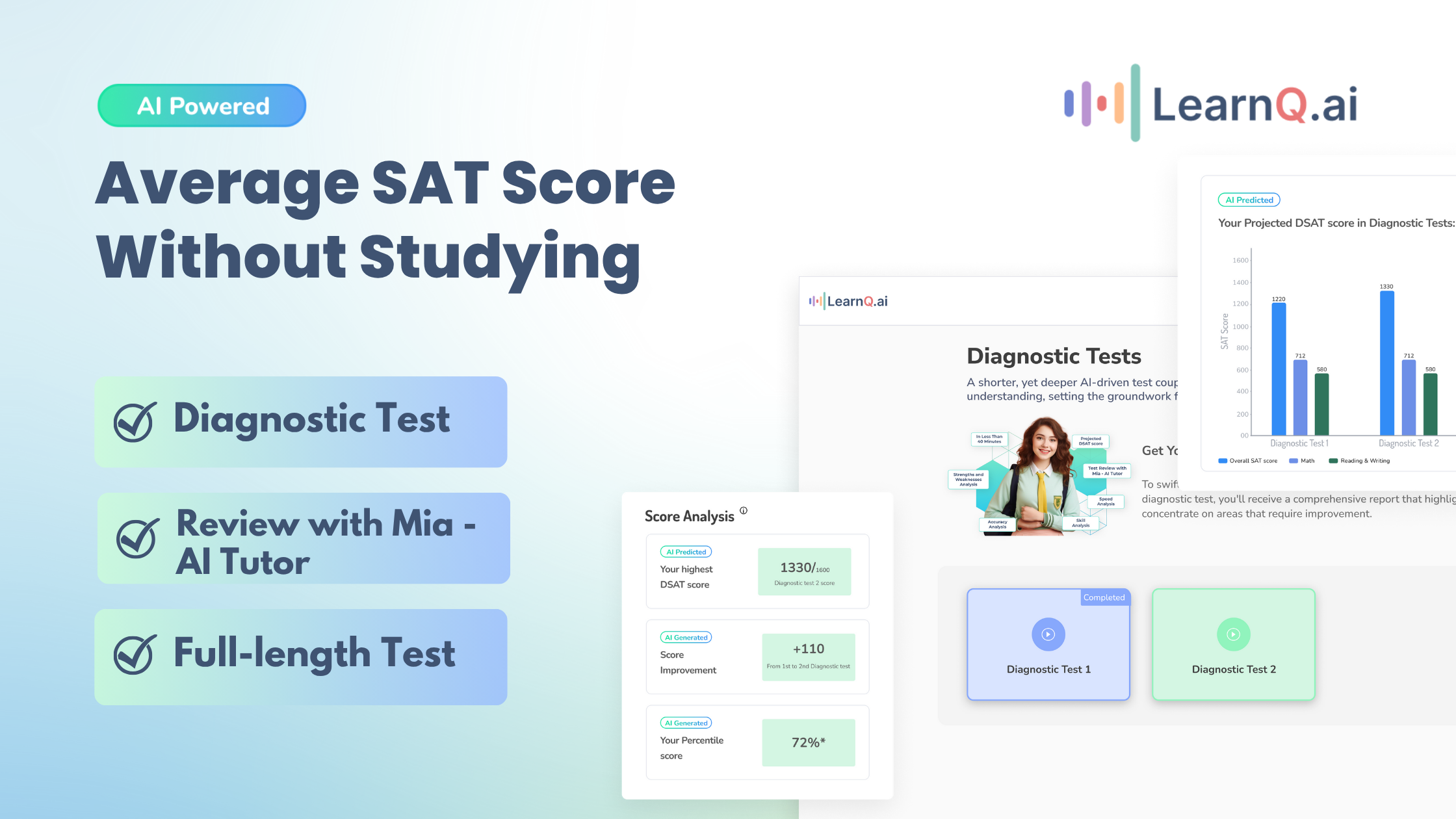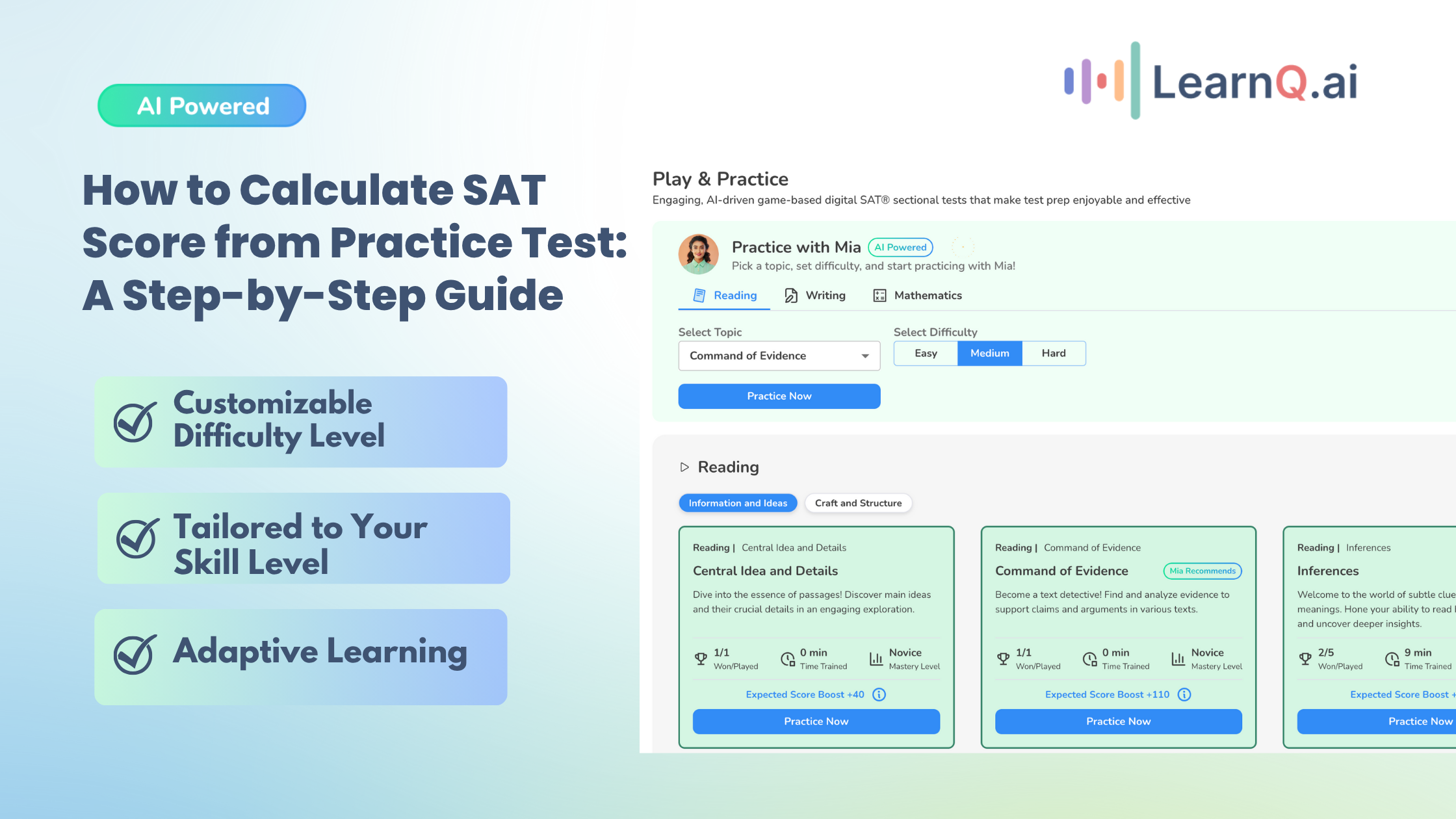Understanding SAT scoring is crucial for students applying to colleges as it directly impacts their chances of admission. The SAT is a standardized test widely used by colleges in the United States to assess a student’s readiness for college.
Knowing how the SAT is scored helps students gauge their performance, identify areas for improvement, and set realistic goals for their college applications. A good SAT score can significantly enhance a student’s college application, opening doors to prestigious universities and scholarship opportunities.
The Digital SAT Scoring Algorithm plays a vital role in this process, ensuring fair and accurate scoring of the test.
The SAT has transitioned to a digital format, marking a significant change in how the test is administered and scored. The move to a digital SAT has brought about alterations in the scoring system, adapting to the new testing environment. The Digital SAT Scoring Algorithm incorporates advanced algorithms to evaluate student responses efficiently and accurately. This transition has streamlined the testing process, providing students with a more interactive and personalized testing experience while maintaining the integrity of the scoring system.
Adaptive Nature of the Digital SAT
The Digital SAT’s adaptive nature is a key feature that sets it apart from traditional standardized tests. Here’s a breakdown of how this adaptivity works:
- Explanation of Multistage Adaptive Testing (MST): The Digital SAT uses a multistage adaptive testing approach, where the difficulty of the test adapts based on the test taker’s performance in earlier sections.
- Section-Level Adaptivity: The performance in the first module influences the difficulty of the second module. Doing well in the initial sections can lead to more challenging questions in later sections.
- Performance Impact: The test dynamically adjusts the difficulty level based on the test taker’s responses. Correct answers lead to more difficult questions, while incorrect answers lead to easier questions.
- Adaptive Algorithm: The Digital SAT uses a sophisticated algorithm to determine the difficulty level of each question, ensuring that the test adapts in real-time to the test taker’s abilities.
- Test Precision and Personalization: This adaptivity enhances the precision of the test, ensuring that it accurately measures the test taker’s abilities. It also personalizes the test experience, making it more engaging and relevant to each individual.
- Strategic Approach: Consistent performance across sections is crucial, as it ensures that the adaptivity of the test is effective. Maintaining a steady level of performance can lead to a more accurate assessment of the test taker’s abilities.
Overall, the adaptive nature of the Digital SAT enhances the test’s precision, personalization, and effectiveness in measuring the test taker’s abilities.
LearnQ.ai is Powered by VEGA AI—Is your Institute Next?
Give students a Duolingo-style test-prep platform with Shopify-level customization for tutors and institutes.
Understanding the Digital SAT Scoring System
The Digital SAT scoring system is crucial for interpreting test results. Here’s a breakdown of its key components:
- Scoring Range for Reading and Writing, and Math Sections: The Reading and Writing sections and the Math section are scored separately, with each section having a scoring range. The total score ranges from 400 to 1600 points.
- Combining Section Scores for a Total Maximum Score of 1600 Points: The total SAT score is the sum of the scores from the Reading and Writing section (200-800) and the Math section (200-800), resulting in a maximum score of 1600 points.
| Section | Time (per module) | No. of Questions (per module) | Time Allotted (per module) | Structure |
| Reading and Writing | 32 minutes | 27 questions | 32 minutes | Two modules (32 minutes each) |
| Math | 35 minutes | Stage 1: 22 questions | Stage 1: 35 mins | Two modules (35 minutes each) |
| Stage 2: 22 questions | Stage 2: 35 mins |
- SAT Score Percentiles Table and Understanding Target Schools’ Score Requirements: The SAT score percentiles table provides information on how a test taker’s score compares to those of other test takers. Understanding this table can help test takers gauge their performance and set realistic goals based on their target schools’ score requirements.
- College Board’s Benchmarks for College Readiness: The College Board provides benchmarks that indicate whether a test taker is on track for college readiness. These benchmarks are based on the SAT scores of students who have demonstrated success in college.
Understanding the Digital SAT scoring system is essential for interpreting test results accurately and setting realistic goals for college admissions.
Calculating the Digital SAT Scores
Understanding how the Digital SAT scores are calculated is essential for interpreting your performance accurately. Here’s a breakdown of the key steps in the scoring process:
Here’s a table summarizing the key points for calculating the Digital SAT scores:
| Step | Description |
| Comparison of SAT Raw Scores and Scale Scores | Raw scores (number of correct answers) are converted to scale scores (200-800) for each section. |
| Reading and Writing Section | Raw scores for this section are converted to scaled scores using a conversion table. |
| Math Section | Raw scores for multiple-choice and grid-in questions are calculated separately. |
| Combining Scores for Overall SAT Score | Scaled scores from each section are combined to calculate the overall SAT score (400-1600). |
| Converting Raw Scores to Scaled Scores | The College Board uses equating to ensure scores are comparable across different test forms. |
| Official Score Conversion Tables | Provided by the College Board, these tables show how raw scores are converted to scaled scores. |
This table provides a concise overview of the steps involved in calculating the Digital SAT scores.
Adaptive Testing and Its Impact on Scores
Adaptive testing is a critical aspect of the Digital SAT that significantly influences how scores are determined. Here’s a table summarizing the content about adaptive testing in the Digital SAT:
| Aspect | Impact |
| Demonstrating Adaptive Testing’s Influence | Adaptive testing adjusts question difficulty based on performance. Correct answers lead to more challenging questions, while incorrect answers lead to easier ones, impacting the final score. |
| Importance of Answering Every Question | In the adaptive model, answering every question is crucial. Leaving questions unanswered can lower your score, as the test adapts based on your responses. |
| Preparation Strategies Considering Adaptive Testing | Use adaptive practice tests to prepare. Focus on understanding concepts rather than memorization, as the test adapts to your knowledge level. |
Understanding how adaptive testing works and its impact on scoring is essential for effective preparation and performance on the Digital SAT. By familiarizing yourself with the adaptive model and adjusting your preparation strategies accordingly, you can improve your chances of achieving a higher score.
Enhance your Digital SAT study routine with AI-driven insights and personalized practice tests.
Preparation for the Digital SAT
Preparing for the Digital SAT requires a strategic approach and effective use of available resources. Here are key aspects to consider:
- Fundamental Test-Taking Strategies: Familiarize yourself with the test format and question types. Practice time management, focus on understanding concepts, and develop strategies for each section.
- Utilization of Digital SAT Tools and Score Reports for Improvement: Take advantage of official College Board resources, such as practice tests and personalized score reports. Analyze your performance to identify strengths and weaknesses, and use this information to tailor your study plan.
- Advice Against Trying to Manipulate the Scoring Algorithm: While understanding how the adaptive testing model works is important, focus on answering questions to the best of your ability rather than trying to outsmart the algorithm. Manipulating answers can lead to inaccurate scores and may not reflect your true abilities.
- Introduction to Educational Platforms for Practice Tests and Improvement: Explore educational platforms that offer DSAT preparation materials, including practice tests, study guides, and tips, like LearQ.ai. LearnQ.ai can help you familiarize yourself with the test format and content, improving your confidence and performance on test day.
By following these preparation strategies and utilizing available resources effectively, you can enhance your readiness for the Digital SAT and maximize your potential for success.

SAT Scoring Policies
Understanding the SAT scoring policies is crucial for interpreting your scores and navigating the college admissions process. Here’s what you need to know:
- Clarification of Superscoring and Score Choice: Superscoring is used by some colleges and universities where they consider the highest section scores across multiple test dates when evaluating applications. Score Choice, on the other hand, allows you to choose which SAT scores you send to colleges, selecting your best scores from different test dates.
- University Policies Regarding SAT Scores: Each college and university has its policies regarding SAT scores. Some schools require sending all SAT scores, while others allow Score Choice or super scoring. It’s important to research the policies of the schools you’re interested in to understand how they consider SAT scores in their admissions process.
- Implications of Digital SAT Scoring Algorithm on College Admissions: The move to a digital SAT format may impact college admissions in various ways. Colleges and universities may adjust their policies and criteria for evaluating digital SAT scores, considering factors like test format familiarity, test-taking environment, and score validity. It’s important to stay updated on any changes in admissions policies related to the digital SAT.
Understanding these SAT scoring policies can help you make informed decisions about your test-taking strategy and college application process.
LearnQ.ai is powered by VEGA AI—Is your institute next?
Offer students a Duolingo-style test-prep platform with Shopify-level customization for tutors and institutes.






Conclusion
Understanding the digital SAT scoring algorithm is essential for effectively preparing for the exam and maximizing your scores. The digital SAT scoring algorithm adapts to your performance, making it crucial to answer every question and approach the test strategically. Knowing how the algorithm works can help you prepare more effectively and improve your chances of achieving a higher score.
Continuous learning and practice are key to success on the digital SAT, where LearnQ.ai comes into the picture. A platform that leverages cutting-edge AI technology to create a dynamic, personalized learning experience. Use its resources, such as practice tests, and study materials, and ask its AI tutor any doubts you have any time, anywhere. ILearnQ.ai will help you enhance your skills and confidence. Stay motivated and focused on your goals, and remember that every effort you put in contributes to your growth and improvement.
Stay committed to your learning journey, and remember that each step forward brings you closer to your academic and personal goals.
Check out LearnQ.ai for additional resources and support in your Digital SAT preparation today!
FAQ’s
We understand that you might have a few questions. Therefore, we have added a set of FAQs for you.
How are scores calculated?
Here are detailed responses to common questions about digital SAT scoring:
Calculation of Scores, Differences Between Raw and Scaled Scores: The SAT uses a scoring system where raw scores (number of correct answers) are converted to scaled scores. Scaled scores range from 200 to 800 for each section (Reading/Writing and Math), with the total SAT score being the sum of these two scaled scores. The conversion from raw to scaled scores is based on the difficulty of the questions and is adjusted through a process called equating to ensure fairness across different test versions.
What are the differences between raw and scaled scores?
Calculation of Scores, Differences Between Raw and Scaled Scores:
- Raw Scores: Raw scores are the number of questions you answer correctly on each section of the SAT.
- Scaled Scores: Scaled scores are converted from raw scores to a scale that ranges from 200 to 800 for each section. The total SAT score is the sum of the scaled scores from the Reading/Writing and Math sections, ranging from 400 to 1600.
- Differences: Raw scores are converted to scaled scores using a statistical process called equating, which adjusts for differences in difficulty between different test versions. This ensures that scores are comparable across test dates.
How do the SAT section scores differ from the overall SAT score, and how are score conversion tables helpful in interpreting these scores?
Interpretation of Section Scores and Overall SAT Score, and the Relevance of Score Conversion Tables:
Section Scores: Section scores (Reading/Writing and Math) provide a breakdown of your performance in each area. They range from 200 to 800 each.
Overall SAT Score: The overall SAT score is the sum of the scaled scores from the Reading/Writing and Math sections, ranging from 400 to 1600.
Score Conversion Tables: Score conversion tables help you interpret your raw scores by showing how they correspond to scaled scores. They are useful for understanding your performance relative to other test takers and setting realistic goals for improvement.
Have more questions about Digital SAT? Request a demo now!

